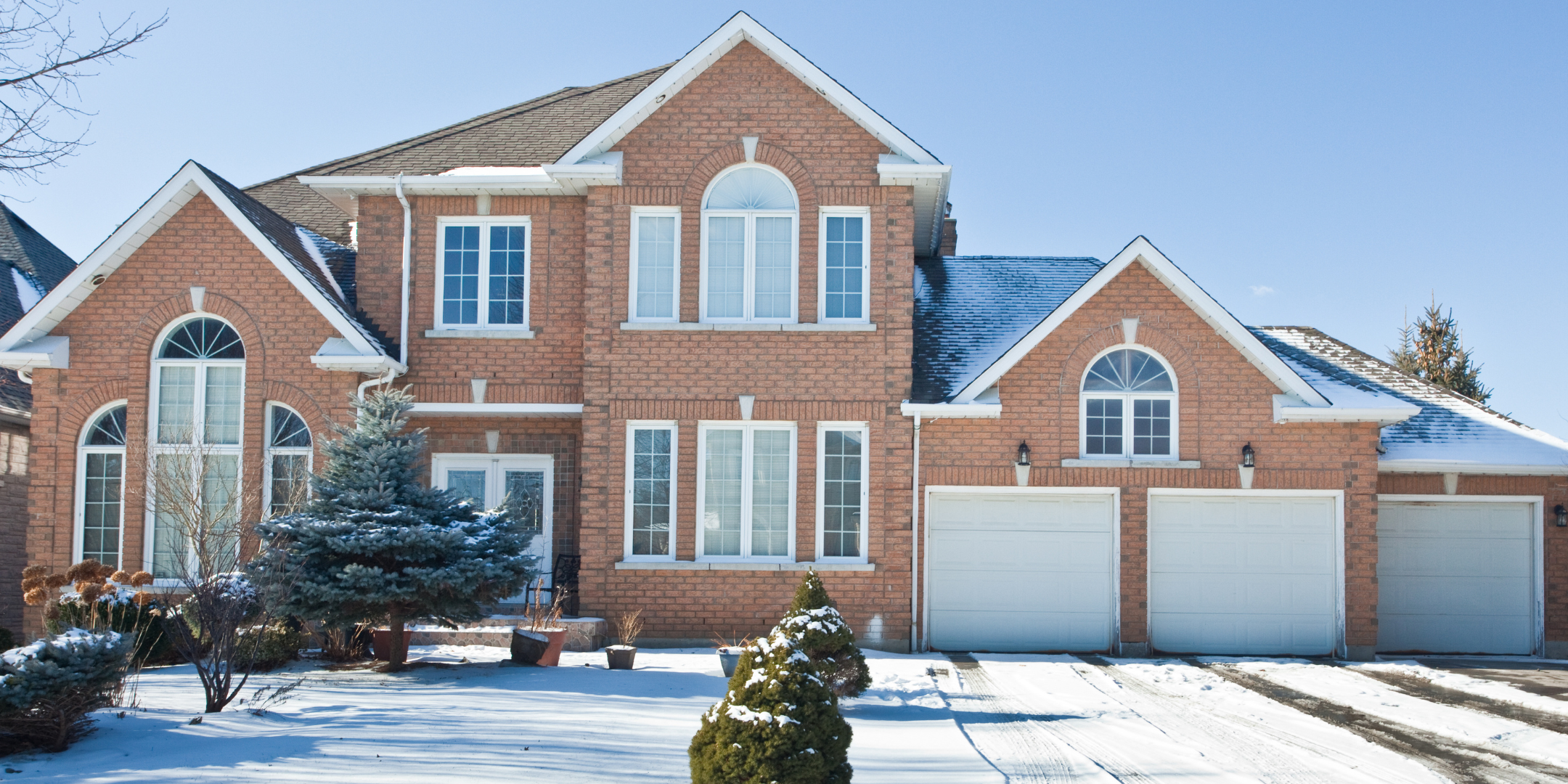How to Prepare Your Home for Winter: HVAC, Plumbing, and Exterior Tips
October 10th, 2024
6 min read
By Daphne Hunt

Winter is just around the corner, and the last thing you want is for your home to be caught unprepared when the temperatures start dropping. From protecting your plumbing to ensuring your heating system is up to the task, preparing your home for the colder months is essential to staying warm, saving energy, and avoiding costly repairs.
caught unprepared when the temperatures start dropping. From protecting your plumbing to ensuring your heating system is up to the task, preparing your home for the colder months is essential to staying warm, saving energy, and avoiding costly repairs.
We’ve helped homeowners just like you for 16 winters strong in keeping their homes warm and functional, regardless of what the outside temperatures are like.
By the end of this article, you’ll know all about how to prepare your entire home for winter — from your HVAC system to your plumbing and even exterior maintenance. With this comprehensive checklist, you'll ensure every part of your home is ready to withstand the winter chill, keeping your family cozy and safe.
Maintaining Your HVAC System: Keep the Heat Flowing
Ensuring your heating system is in peak condition is one of the most important steps in preparing your home for winter. When your HVAC system is well-maintained, it can keep your home warm efficiently, reduce the likelihood of unexpected breakdowns, and help you avoid sky-high energy bills.
Schedule a Professional HVAC Tune-Up
Having a professional technician perform an HVAC tune-up is essential for maintaining the health of your heating system. During the tune-up, the technician will inspect the system for wear and tear, clean components such as coils and burners, and identify any potential problems that could escalate into bigger, more expensive issues. This tune-up ensures your furnace or heat pump runs smoothly and safely throughout the winter, minimizing the risk of breakdowns during peak cold months. Additionally, a well-maintained system runs more efficiently, which can lower your energy bills significantly.
Replace Air Filters
Air filters are critical to your HVAC system’s performance, and neglecting them can lead to poor airflow, decreased efficiency, and even system failure. This not only increases energy consumption but also puts unnecessary strain on your heating unit. Be sure to replace or clean your air filters every 1 to 3 months to ensure optimal performance and better indoor air quality (IAQ), especially during the winter when your system is running constantly.
Test Your Thermostat
Your thermostat plays a key role in regulating your home’s temperature, and if it’s not working properly, your heating system could be running inefficiently. Start by testing your thermostat to ensure it accurately controls the temperature. If your thermostat is outdated, consider upgrading to a smart thermostat. Smart thermostats allow you to set heating schedules, control your system remotely, and adjust the temperature based on your habits.
Seal Ductwork
Leaky ductwork is a common yet often overlooked problem that can dramatically reduce your heating system’s efficiency. Even small gaps or cracks in your ducts can result in up to 30% of heat loss, meaning your system has to work harder to heat your home. Sealing these leaks with mastic sealant or foil tape, or with a heavy duty sealant like Aeroseal Duct Seal, prevents warm air from escaping and ensures more consistent temperatures throughout your home. By improving airflow, you not only boost comfort but also reduce energy waste, leading to lower heating costs during the cold months.
Clear Heating Vents
Blocked or obstructed heating vents can severely affect your system’s ability to distribute heat evenly. Furniture, curtains, or rugs that cover vents prevent proper airflow, causing uneven heating and forcing your system to run longer to reach the desired temperature. Before winter begins, walk through your home and ensure all vents are free from obstructions. This simple step can help maintain balanced heating throughout your home, reduce energy waste, and ensure that every room stays cozy.
Plumbing: Prevent Frozen Pipes and Ensure Running Water
Frozen pipes are one of the most common and damaging problems homeowners face during the winter. When water inside pipes freezes, it expands, which can cause the pipes to burst. This leads to major water damage, expensive repairs, and potential disruption of water service. However, with a few proactive steps, you can significantly reduce the risk of frozen pipes and save yourself from costly headaches down the road.
Insulate Exposed Pipes
Pipes located in unheated areas — such as basements, attics, garages, or crawl spaces — are at a higher risk of freezing because these areas are more exposed to cold air. Wrapping these pipes in foam insulation, heat cables, or heat tape can help maintain a consistent temperature, preventing the water inside from freezing. Insulating pipes is a quick and affordable step that can be done using pre-slit foam tubes available at most hardware stores. In extremely cold climates, you might even consider adding electric heat cable for extra protection.
Tip: Don’t forget to insulate pipes under kitchen sinks and near exterior walls, as these areas are also vulnerable to freezing temperatures.
Drain Outdoor Faucets and Sprinkler Systems
Water left in outdoor faucets, hoses, and sprinkler systems can freeze and expand, leading to burst pipes and damage. Before winter, disconnect garden hoses and store them away. Shut off the water supply to your outdoor faucets (using a shut-off valve inside your home, if available) and drain any remaining water from the pipes by leaving the faucet open. For sprinkler systems, make sure to blow out or drain any remaining water to prevent underground pipes from freezing and cracking.
Tip: If you have a pool, don’t forget to drain pool plumbing systems as well to prevent damage.
Locate Your Main Water Shut-Off Valve
In the event that a pipe does freeze and burst, knowing where your main water shut- off valve is located can prevent major flooding in your home. Quickly shutting off the water will stop further water from entering the pipes and limit the damage. Typically, the shut-off valve is located near the water meter, in the basement, or where the water line enters the home. Make sure everyone in the household knows where this valve is and how to use it.
off valve is located can prevent major flooding in your home. Quickly shutting off the water will stop further water from entering the pipes and limit the damage. Typically, the shut-off valve is located near the water meter, in the basement, or where the water line enters the home. Make sure everyone in the household knows where this valve is and how to use it.
Tip: Mark your shut-off valve clearly so it’s easy to find in case of an emergency.
Let Faucets Drip
On extremely cold nights, especially when temperatures dip below freezing, it’s a good idea to let a small trickle of water run from your faucets. Moving water is less likely to freeze, so keeping even a small flow can prevent the water in your pipes from turning into ice. This is particularly important for pipes running along exterior walls or in unheated areas of your home.
Tip: Focus on faucets connected to the most vulnerable pipes—such as those in basements or exterior walls—when letting water drip.
Insulation and Sealing: Lock in the Warmth
A properly insulated home is one of the most effective ways to ensure that your heating system runs efficiently. Without sufficient insulation and air sealing, your home loses heat, which not only reduces comfort but also forces your furnace or heat pump to work harder. By maintaining a well-insulated home, you’ll minimize energy waste and keep your home consistently warm during the coldest months.
Check and Add Insulation
Insulation acts as a barrier, preventing the transfer of heat between your home’s interior and the cold outside air. Areas like the attic, walls, and floors are common culprits for heat loss, especially if your home is older or wasn’t built with energy efficiency in mind. Inspecting these areas for proper insulation levels is critical. In the attic especially, heat rises and can escape through the roof if not properly insulated. You may notice gaps or thin insulation in certain areas. Adding more insulation can significantly improve your home’s ability to retain heat, and different types of insulation—such as fiberglass batts, foam board, or blown-in cellulose—offer various levels of effectiveness.
Using tools like a thermal imaging camera can help identify areas where heat is escaping, or you may choose to hire a professional to assess and address insulation deficiencies.
Seal Drafts Around Windows and Doors
Even in well-insulated homes, air leaks around windows and doors can allow cold air to enter and warm air to escape, putting extra strain on your heating system. Addressing these drafts with simple fixes can make a big difference in maintaining a consistent indoor temperature. Weatherstripping and caulking are affordable and effective ways to seal any gaps around window frames or door seams. Weatherstripping is ideal for areas where doors or windows open and close, while caulk works best for stationary parts, such as the edges of window panes.
Another often-overlooked area for drafts is the threshold beneath doors. Installing door sweeps on exterior doors can block cold air from seeping in under the door, further reducing heat loss.
To identify drafts, simply run your hand around the edges of windows and doors on a cold day. If you feel cool air, it’s time to seal those gaps.
Install or Replace Storm Windows
Storm windows provide an additional layer of insulation, creating a buffer zone between the cold outdoor air and your home’s interior. If you have older, single-pane windows, storm windows can make a significant difference in reducing heat loss. Installing storm windows, whether on the interior or exterior, helps trap heat inside while keeping the cold out. Available in various materials such as aluminum, vinyl, or wood, they enhance your home's energy efficiency without the need to replace your existing windows.
Other Ways to Ensure Your Home is Winter Ready
Roof and Gutter Maintenance
- Clean out gutters to prevent ice dams and water leaks.
- Inspect the roof for loose or missing shingles, and repair any damage.
- Install gutter guards to reduce debris buildup and minimize maintenance.
Safety and Emergency Preparedness
- Test smoke and carbon monoxide detectors, replacing batteries as needed.
- Stock up on essentials like blankets, batteries, flashlights, and non-perishable food for power outages.
- Service your fireplace and chimney to prevent fire hazards.
Exterior Home Preparation
- Trim overhanging trees to prevent damage from heavy snow or ice.
- Inspect walkways and driveways for cracks, repairing them before freezing temperatures set in.
- Cover outdoor furniture and grills to protect them from snow and ice.
Indoor Comfort and Humidity Control
- Use a humidifier to maintain comfortable indoor humidity and reduce dry air problems.
- Monitor indoor air quality by using an air purifier or changing HVAC filters regularly.
Preparing for Winter in Every Corner of Your Home
When you started reading, you might have felt overwhelmed by all the tasks required to prepare your home for winter. The problem was knowing how to tackle everything from HVAC maintenance to plumbing and insulation. Now, you know the steps needed to protect your home from the cold, reduce energy costs, and ensure safety.
for winter. The problem was knowing how to tackle everything from HVAC maintenance to plumbing and insulation. Now, you know the steps needed to protect your home from the cold, reduce energy costs, and ensure safety.
Whether it’s checking your heating system, protecting your pipes, or ensuring your roof and gutters are ready, following these steps will keep your home comfortable and efficient.
Curious about which HVAC systems are best for extreme weather conditions? Explore our guide on The Best HVAC Systems for Extreme Hot or Cold Climates for the top picks.
Daphne Hunt holds a bachelor's degree in English and Mass Communication and has a lifelong passion for writing. She thrives on using her skills to craft compelling pieces that inform, inspire, and connect with readers.
Topics:




